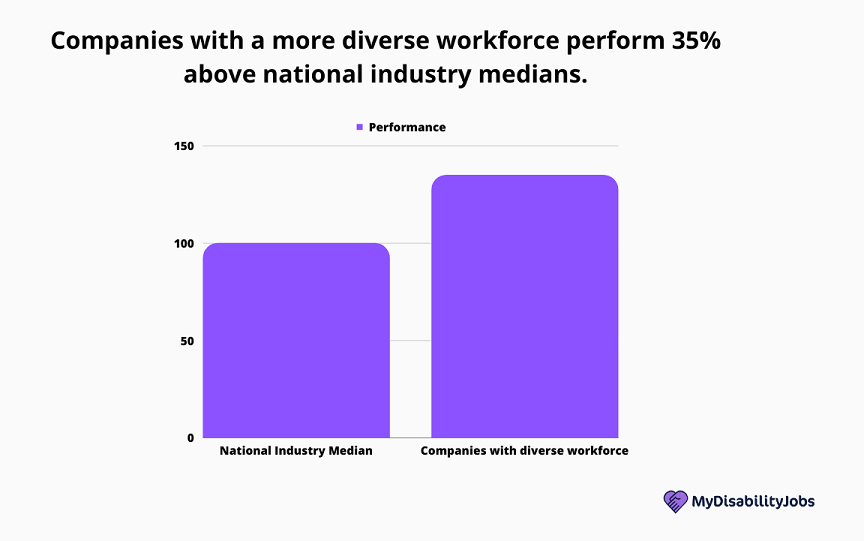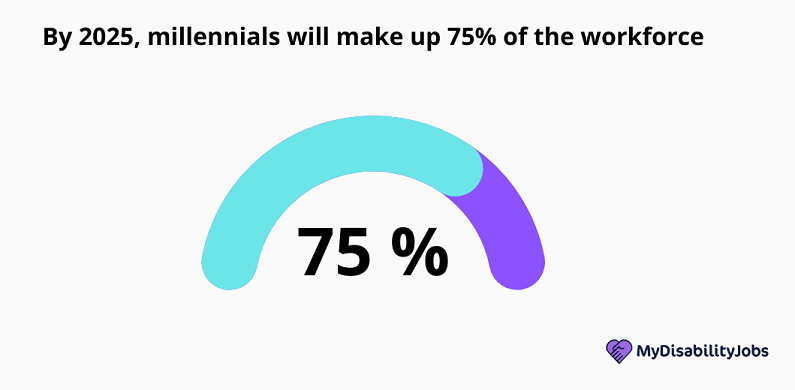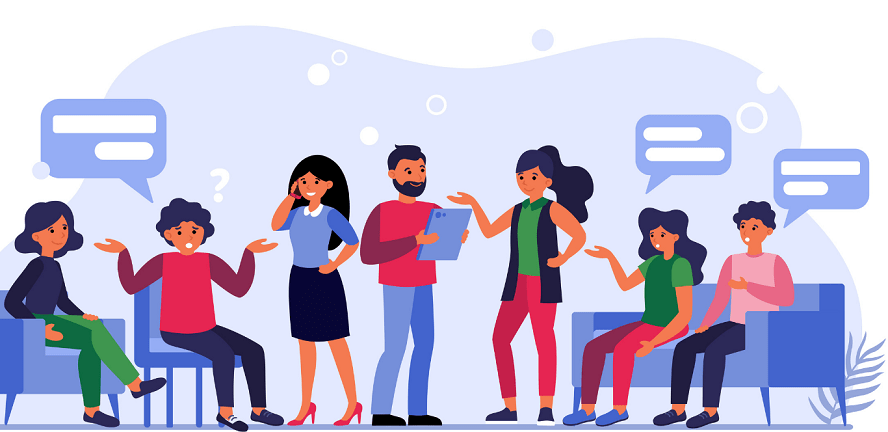Top 10 Challenges of Diversity in the Workplace & How to Overcome Them
In the United States, multiculturalism is an essential characteristic that fosters diversity and enhances the possibility to appreciate and value individual differences. This huge diversity can be beneficial for companies if they take steps to ensure that diverse people are represented in their workforce.
But although it is proven to be enormously beneficial, diversity also carries some issues that must be addressed by company leaders, HR personnel and also candidates.
Challenges of diversity in the workplace represent a new area of knowledge and DEI training needed in the labour market and are indispensable for the jobs of the future. That is the reason why today we want to show you what those challenges are and how to deal with them in the most effective ways.
In this article:
->Benefits of Becoming a Diverse Company
->Diversity Issues and Challenges in the Workplace
->The Future of Workplace Diversity
->FAQ
Is your company offering inclusive jobs for people with disabilities? As an employer, you can publish your job offers on MyDisabilityJobs and reach thousands of qualified candidates.
True Inclusion
To be fair with the needs of each person in a company, it is necessary to be equitable, which implies that some groups need more help than others, given that even though they have the same opportunities, due to their differences it may be much more difficult to reach them.
Therefore, is not enough to just recruit diverse candidates, implementing true inclusion is key. It means respecting and valuing their experiences and contributions. This is important for those who have typically been excluded. Their input is valuable in community discussions and decision-making. Making sure they are being listened to and respected is what makes a difference.
Related article: Diversity and Inclusion Topics for Meetings
Types of Diversity
Differentiating the types of diversity a company requires or already have is important to develop the correct steps to deal with the different challenges.
As this differentiation is not always known, here we explain it so you can always have it present:
Acquired diversity
This involves differences in skills, education and experiences. Acquired differences help to produce constructive debate amongst employees when problem-solving to help them arrive at the best solution. For this reason, debate based on differences should be encouraged as it can be advantageous to the organisation.
Inherent diversity:
This involves differences in gender, race and age. However, this type of diversity can create interpersonal conflict among employees due to biases and prejudices against those who are different. Conflicts based on inherent diversity can be lengthy and require careful management to avoid low performance and morale.
Benefits of Becoming a Diverse Company
A study by McKinsey shows that diverse workplaces are more creative, innovative and financially successful. The research indicates that the presence of minorities in leadership improves problem-solving and decision-making by bringing in different and broader perspectives.
Companies with a more diverse workforce perform 35% above national industry medians.

- Another benefit of this strategy is the improvement of employer branding.
Having diversity, inclusion and labour equality policies and programs is an important factor in attracting and retaining the best talent in the market.
- In addition, diverse teams improve customer-oriented processes by better aligning themselves with an increasingly heterogeneous customer base.
A staff that reflects the variety of groups present in the market will have a better understanding of their behaviour.
- On the other hand, diversity increases employee satisfaction, confidence and self-esteem while weakening prejudice.
Increased satisfaction is triggered when representation is above 15%. The support of colleagues and superiors is also crucial; it is often more important than the presence of a non-discrimination policy.
Diversity Issues and Challenges in the Workplace:
1. Communication Barriers
Many organizations face communication issues, but these problems are bound to arise when people from different backgrounds, cultures, genders, ages, etc., work together. Misunderstandings, clashes, and conflicts will happen.
Men and women communicate differently, millennials and baby boomers share different norms of communication and different ethnicities also have different cues and expressions. This landscape makes communication the biggest challenge for diversity in the workplace.
Let’s take, for instance, a generational difference in communication preferences. The younger team members in a company prefer to communicate via Slack platform, while the older team members prefer to use the phone. Misunderstandings and conflict can arise from this situation.
In gender: it is possible that female employees may talk more politely, avoid swear words and use more tag questions than male employees, which could lead to misunderstandings. Or regarding delivery, younger employees may use different terminology and slang that older generations are unfamiliar with.
Now about the language, maybe some employees speak English as a second language and struggle to follow the conversation in meetings or other settings. The lack of understanding can lead to difficulties in the performance of the employee, ostracism and loss of productivity. Moreover, some gestures could easily be considered an offense by some groups and not by others. Working in highly diverse organizations calls for strong interpersonal skills and cultural sensitivity to positively sort out such situations.
How to solve communication issues?
- It is important to define expectations and establish clear rules on when and how to use communication platforms. It could be highly beneficial to all groups of employees.
- Acknowledge language barriers and provide guidelines for running more inclusive meetings while encouraging employees to feel safe speaking up when they experience issues in communication.
- Try to hire as many bilingual employees as possible or provide language support courses for them.
2. Bias and Discrimination
Prejudice, stereotypes, and bias are often ingrained in us and overcoming them takes work and an openness to change.
Sometimes these behaviors go unnoticed and can very quickly damage an organization’s culture and harmony. Most of the preconceived beliefs individuals have from each other are unreasoned but are seen as truths.
There may be employees not wanting to engage with one another. When these situations arise, it is essential to handle them quickly, so they do not interfere with the business goal of improving diversity. If left unchecked, it could cause divisions in the company. It may even result in some employees leaving and other candidates not wanting to work at your organization. Also affecting the company’s reputation.
How to overcome this diversity challenge?
- Ensure that employees are given equal opportunities in leadership roles by involving diversity principles in succession planning.
- Publicly condemning any form of blatant racism or discrimination while encouraging employees to speak up when they spot implicit biases goes to lengths to build a diverse and inclusive workplace.
- Diversity training may also help employees understand, accept, and respect each other’s differences.
3. Cultural Clashes
Diversity in cultural, spiritual, and political beliefs can sometimes pose a challenge in a diverse workplace.
Discussions and misunderstandings can arise due to ideological reasons interfering with work-related tasks. If a company is used to certain costumes coming from a specific religion, it can be harmful to individuals with different beliefs.
Diversity issues from ethnic and cultural differences are still present in the workplace. There are still some individuals who hold prejudice against people who have different ethnic, cultural, and religious backgrounds. According to a New York Times report, there are only 5 African-American CEOs out of Fortune 500 companies. Furthermore, our workplace and employment discrimination statistics report revealed that people with African-American-sounding names are 14% less likely to get a callback.
How to solve it?
- Employees need to be aware of not imposing their beliefs on others to prevent spats and disputes.
- Keep a zero-tolerance policy for discrimination in the workplace.
- Create internal company policies with clear and objective regulations.
- Provide cultural sensitivities training and diversity awareness programs in the workplace to address this issue.
- Respect employees’ beliefs and be flexible with schedules.
4. Generational Gaps
By 2025, millennials will make up 75% of the workforce, and they are changing the work culture. Employees from other generations may have difficulties adapting to changes in the workplace and the work culture that the younger generation is bringing about.

In larger corporations, there are more diversified age groups, from teenagers to senior citizens. As a result, social circles may be formed, and some workers may be isolated from the team. There may also be times when workers from different generations may disagree with how things should be done.
How to overcome this challenge?
- To maintain teamwork and collaboration, create an open communication culture within your organization to help bridge the gap between generations.
- Maintain frequent training on new technologies.
- Keep the teams informed of new changes in advance.
5. Diversity Implementation
Enforcing diversity is the responsibility of hiring managers and senior decision-makers.
38% of executives reported that the primary sponsor of diversity and inclusion efforts is the CEO. If the CEO is not on board with creating a more diverse and inclusive atmosphere then convincing the new direction of the organization becomes more complex. The only problem is that managers do not always have the time to manage such a large and time-consuming operation, meaning that diversity plans do not receive the attention they deserve and require.
Employees may feel frustrated if the transition to a more diverse future is not a smooth one. For many established life science organizations, implementing a diversity initiative can be a complete 180 from the origins of the organization. It is natural for employees to resist change, and employers who want to implement diversity initiatives may come up against some resistance to their plans. Some people may cling to how things have always been done. However, with persistence and good leadership, this resistance can be overcome.
What are the solutions?
- It is key to communicate to employees the value of pursuing workplace diversity.
- Arrange diversity training so that employees can learn about the benefits and how to respect their colleagues.
- Diversity plans should not be rushed. Spend quality time crafting them to ensure the achievement of the goals.
Related Article:
Managing Diversity in the Workplace: 10 Strategies.
Fostering Diversity in the Workplace: 10 Ways to do it.
6. Recruiting Diverse Talent
When a company is starting to change the course toward diversity, they may realize the actual lack of diversity they have and face the challenge of how to acquire diverse talent if it has never been done before. Implementing effective diversity recruiting strategies becomes crucial in such situations. The HR personnel may find themselves caught up in a circle of recruiting the same type of talent with similar characteristics as them and previous employees.
To overcome this, it’s essential to explore how to recruit diverse candidates and incorporate diversity recruiting strategies into the hiring process. By actively seeking out candidates from underrepresented backgrounds and utilizing inclusive outreach methods, companies can foster a more diverse and inclusive workforce.
How to overcome this diversity challenge?
- Explore how to recruit diverse candidates and incorporate diversity recruiting strategies
- Diversify where your company sources applicants by using minorities-focused job boards.
- Write job descriptions that are neutral or encourage diverse applicants.
- Remove unconscious biases during the interview process.
- Provide mentors that will support new employees through onboarding and continued development.
Is your company offering inclusive jobs for disabled people? As an employer, you can publish your job offers on MyDisabilityJobs and reach thousands of qualified candidates who have disabilities.
7. Productivity Issues
Cultural conflict is unhealthy and can significantly lower both the productivity and morale of employees. Diverse teams can lead to the long-term success of businesses. However, if conflicts resulting from cultural clashes cannot be resolved effectively, it would cause lasting negative effects on employee satisfaction, the business’s reputation, image, and more.
For instance, productivity could be affected by different perspectives, opinions, and ideas. Although those are great for innovation, they can slow down decision-making and progress toward goals. With too many ideas or solutions on the table, finding a consensus about the direction of a project can be put in jeopardy. It is difficult to get employees to buy into the project if they do not believe in its direction.
What to do to resolve this issue?
- Make space for debates to happen by allowing more time for teams to consider different ideas and come to more informed decisions.
- Allow people to speak up, even in an area outside of their expertise.
- Consider defining a final decision maker who can consider all ideas and decide how to move forward ultimately. In doing so, they must acknowledge and recognize contributors to ensure other team members feel valued for their ideas.
- Another option is to set up a small committee. If there is no consensus among the team, the committee can examine the solutions put forward. It will be up to the committee to decide how the team will move forward.
8. Administrative Tasks
If the diversity focus includes building a workforce that spans the world it may become a complex and costly process. In some cases, organizations may sponsor the transfer of talents to different locations. The sponsorship could lead to endless administrative work and a dedicated budget for accommodations and traveling.
How to address it?
- Organizations need to establish guidelines for working visa arrangements plus employment policies and ensure they comply with local labor and immigration laws.
- Consider the option of the region and the cost/benefits of the practices.
9. Tokenism
Tokenism refers to the practice of including individuals from underrepresented groups solely for the purpose of appearing diverse, without giving them meaningful opportunities or a genuine voice. This can lead to feelings of isolation and exclusion among these individuals.
10. Microaggressions
Microaggressions are subtle, often unintentional actions or remarks that convey derogatory or negative messages about someone’s identity. They can contribute to a hostile and unwelcoming workplace environment, adversely affecting individuals from diverse backgrounds.
The impact of such behaviors extends beyond employee well-being, as studies on workplace bullying statistics highlight the significant costs of bullying and harassment in the workplace.
Addressing and mitigating microaggressions is crucial to fostering a positive work culture and preventing the detrimental effects associated with workplace mistreatment.
Is your company offering inclusive jobs for people with disabilities? As an employer, you can publish your job offers on MyDisabilityJobs and reach thousands of qualified candidates.
The Future of Workplace Diversity
The workplace is evolving, and so is the workforce. With each passing year, the workforce becomes more diverse, and businesses are starting to take notice. To stay competitive, businesses need to embrace workplace diversity and create an inclusive environment that welcomes all types of employees.
Businesses that embrace workplace diversity will be better positioned to compete in the global marketplace. In today’s economy, businesses need to be able to tap into a variety of perspectives and experiences to be successful. Those that make workplace diversity a priority will be better positioned to do just that.
In general, to overcome diversity challenges, companies should focus on not pressuring employees to fit into the companies’ culture but instead adding up groups’ cultures to the company.
Najim M., founder of MyDisabilityJobs
Also, managers and team leaders must provide their members with fair and open opportunities to share and contribute their approaches for improvements. Every employee needs to feel that they are heard and respected for who they are and what they are capable of. These unique experiences are invaluable for teams to build a fertile ground for innovation.
Taking a stance is also an important takeaway. Being neutral is no longer a good idea since it could cause more harm than good. Employees would not feel supported and may lack trust in the company’s policies. Moreover, HR managers should play an active role in identifying and resolving any conscious and non-conscious bias towards minority groups as fast as possible.
FAQ
The challenges of diversity in the workplace include:
-Bias and discrimination
-Cultural clashes
-Generational gaps
-Diversity implementation
-Recruitment of diverse talent
-Productivity issues
-Administrative tasks
-Tokenism
-Microaggressions
To overcome diversity challenges, there are various approaches:
-Establish true inclusion
-Address bias and discrimination
-Manage cultural clashes
-Bridge generational gaps
-Implement diversity effectively
-Recruit diverse talent
-Address productivity issues
-Streamline administrative tasks
-Avoid tokenism
-Mitigate microaggressions
Leaders face several challenges when managing diversity, including:
-Overcoming bias and stereotypes
-Navigating cultural differences
-Fostering inclusive communication
-Resolving conflicts and misunderstandings
-Balancing individual and group needs
-Addressing power dynamics and privilege
-Building trust and cohesion among diverse team members
-Promoting equitable opportunities and career development
-Managing resistance to change
-Ensuring accountability and measuring progress.
Related articles:
Disability in the Workplace: Developing Accessibility in 10 Ways
Diversity Management: What is it and Concept
Diversity and Inclusion Topics for Discussion: 9 Talking Points
Managing Diversity in the Workplace: 10 Strategies
Inclusive Behaviors in The Workplace | 15 Ways to Promote it


Comments are closed